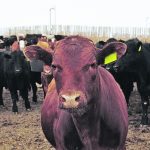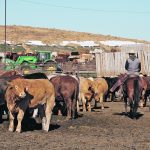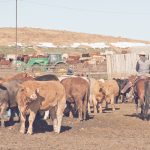Andrea Stroeve-Sawa of Shipwheel Cattle Feeders learned stockmanship from the man himself: Bud Williams, the guru of low-stress cattle handling. Her father met Williams at a conference and invited him to visit Alberta. Stroeve-Sawa said her father and Williams worked cattle together for two weeks, 12 hours a day, and Williams taught the ins and […] Read more
Tag Archives stockmanship

Handling tied to cattle health
Low-stress handling called an important tool that producers can use to improve their cattle’s health
Lee Sinclair’s interest in low-stress cattle handling emerged during a summer job at a feedlot and carried through to his career with Merck Animal Health. “Nobody had ever told me position, distance and angles make the difference. All we were taught is, ‘we’ve got to get this done’,” Sinclair said of his initial experience working […] Read more
Horses can play an important role in feedlots
Feedlot horses’ attitude, energy and disposition send important messages to cattle and make handling them much easier
Cattle will sense the confidence, or lack of it, within the horse and will alter their movements accordingly, says Dr. Tom Noffsinger, a veterinarian with Production Animal Consultation.



